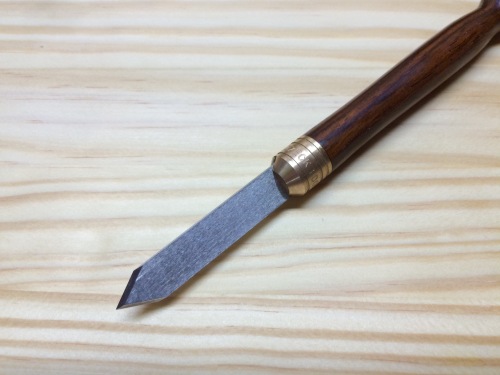Review – The Lie Nielsen Honing Guide
Sharpening is not my favorite task. I prefer working wood to working tools. However, now and then you need to grease the machine. I’m always looking for ways of speeding up the process, so that I can get back to work as quickly as possible. As a result, I’ve purchased a few sharpening jigs throughout the years.
First, it was the Veritas MKII. It’s a nice jig, but it has a couple of major weaknesses. Your blades can skew during use, and using the registration jig slows down the process. So, I sold the MKII and purchased a cheap Eclipse-style side-clamping jig. This solved the problem of blade skew and worked well for most plane irons. However, it never held my chisels square and was poorly made. I kept the Eclipse, but purchased a Kell honing guide for my chisels. The Kell jig is beautiful and works well for chisels. Unfortunately, it is difficult to hold with certain blades. Additionally, it required two different setups for chisels and plane irons. Enter the Lie Nielsen honing guide.
At first, I hesitated to give it a shot due to its price. At $125, the Lie Nielsen honing guide is pricey. Lie Nielsen offers several additional “jaws” to support many different tools. However, each set costs an extra $25 to $35. Despite the price of admission, I gave it shot. I also picked up a pair of their long jaws for use with short irons such as those found in spokeshaves.
The guide comes packed in a small, clear plastic box with a set of instructions. The box makes a great place to store the guide out of the elements. So, I kept it. Everything on the guide is well made. Lie Nielsen machines all the parts, the bearings roll smoothly, and there is absolutely no slop. In use, the guide proves comfortable to use with all of my tools.
So far, my favorite thing about the guide is that there is only one slot in the jaws. I use stop blocks to quickly set the honing angle for all of my tools. So, I now I use the same set of stop blocks for all my tools. The jig feels like it’s on rails when in use. However, the narrow wheel allows you to create a cambered edge if that’s your goal. I might be mistaken, but I believe I am able to pull a burr on a dulled edge more quickly with this jig than with others. If correct, I attribute this to the tight tolerances to which Lie Nielsen manufactures the guide. Finally, while the various accessory jaws are nice, they do require some fiddling. It takes a few minutes to swap them out.
In conclusion, the Lie Nielsen honing guide meets all of my requirements. It easily bests all the other honing guides I have used in the past. The time and frustration it saves me while sharpening justifies its hefty price. In fact, it has probably already paid for itself.



















